I was fortunate enough to get the opportunity to test drive the latest SUV from Mercedes-Benz, the EQC 400, at Garage 42. Prior to the test drive, I had already gained some information about this all-electric SUV from Mercedes-Benz from last year’s Shanghai Auto Show and various forums. In this era of new energy, I was really looking forward to seeing how a traditional luxury brand could make a new energy vehicle.
First Impressions of EQC
As soon as I received the car, I was amazed by its “avant-garde” appearance. Consumers have had mixed reactions to this new design from Mercedes-Benz. The front face of the car, including the headlights, adopts a new design language that can be described as smooth and dignified. In reality, the car looks even more impressive than in pictures. The more I saw it, the more I got used to the styling. Therefore, in terms of appearance, you still need to go to the 4S store to see whether it’s the one you like.
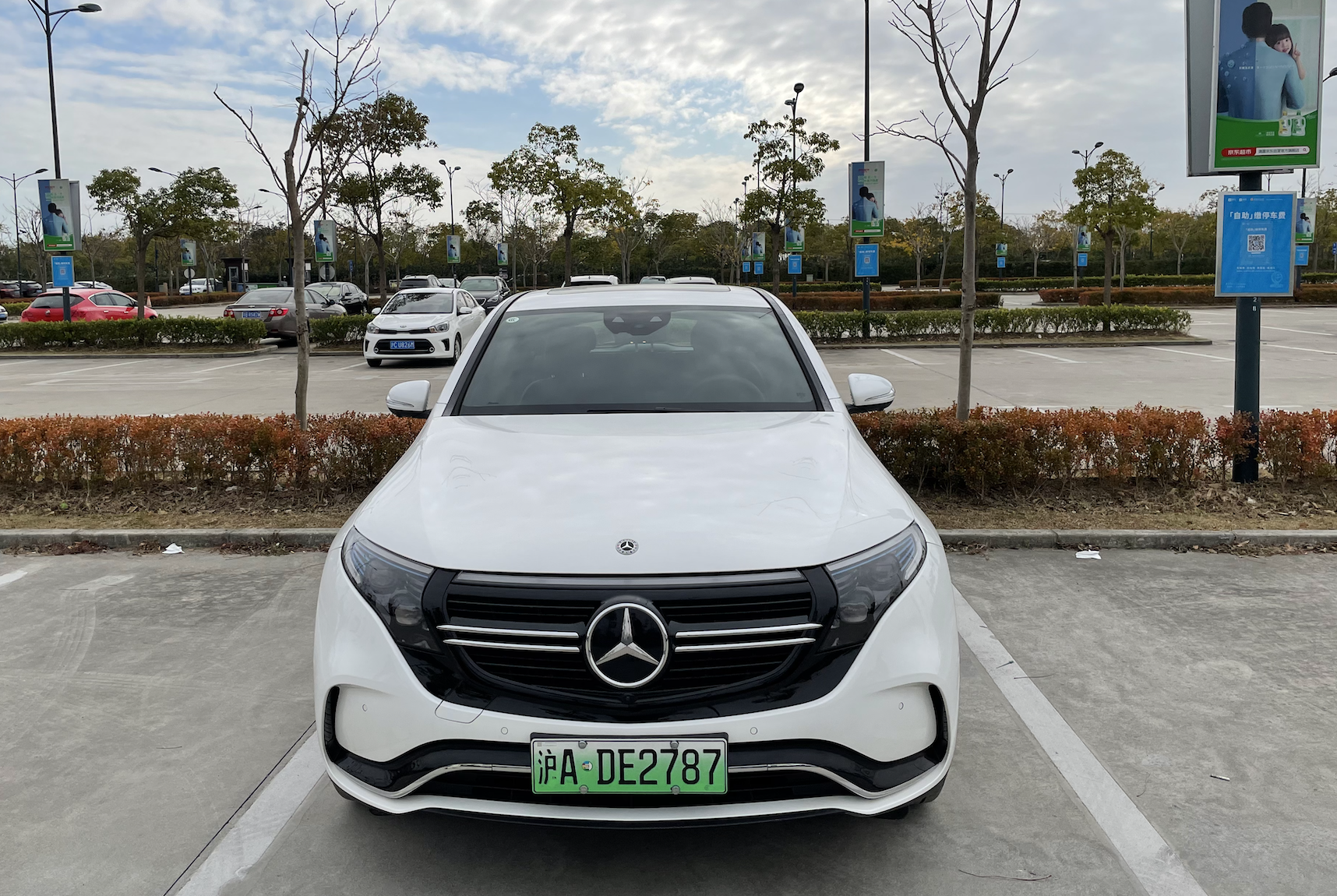
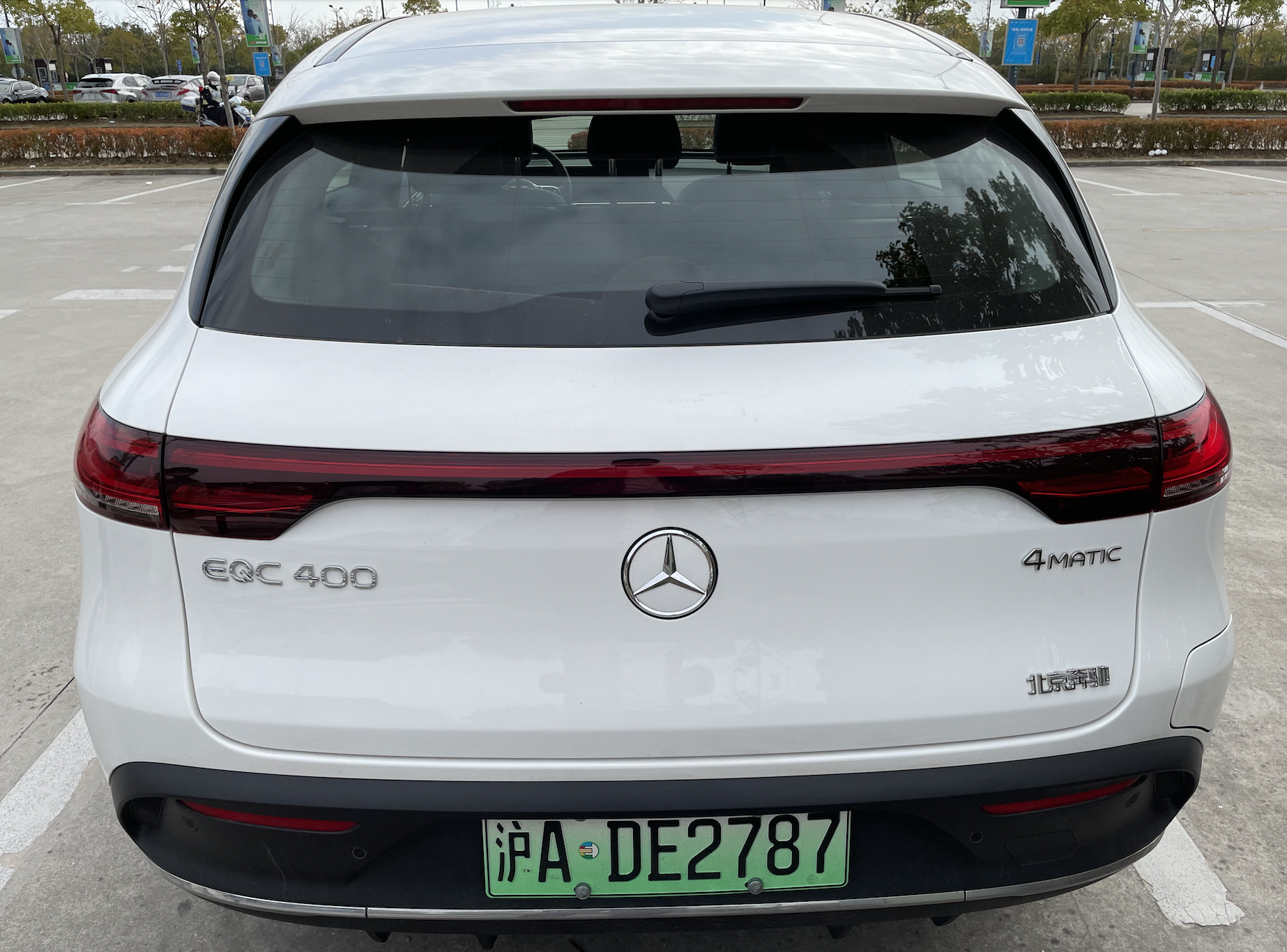
There are blue decorative strips at the headlights and a lot of blue elements on the body, making you aware at first glance that it is a pure electric vehicle.
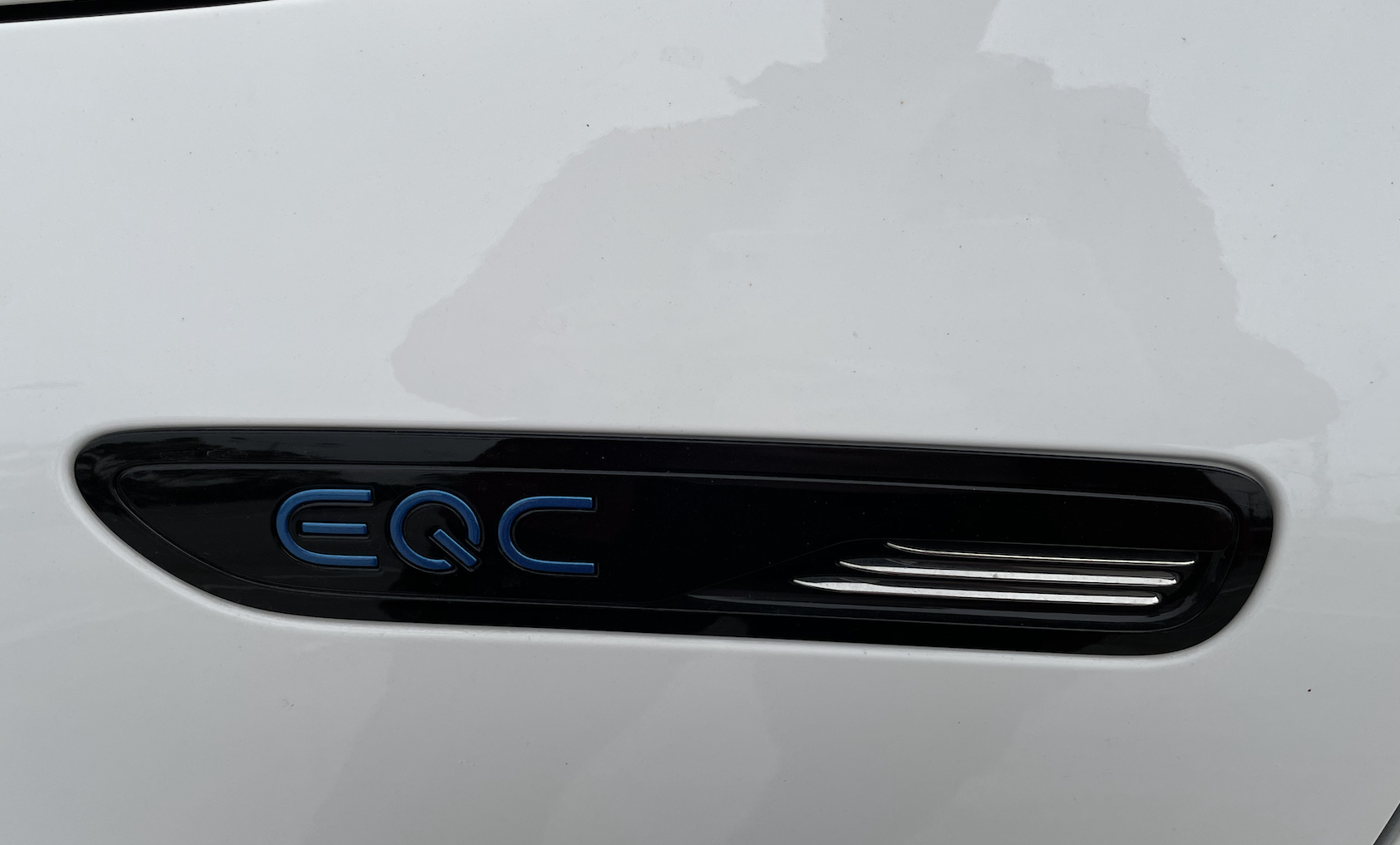
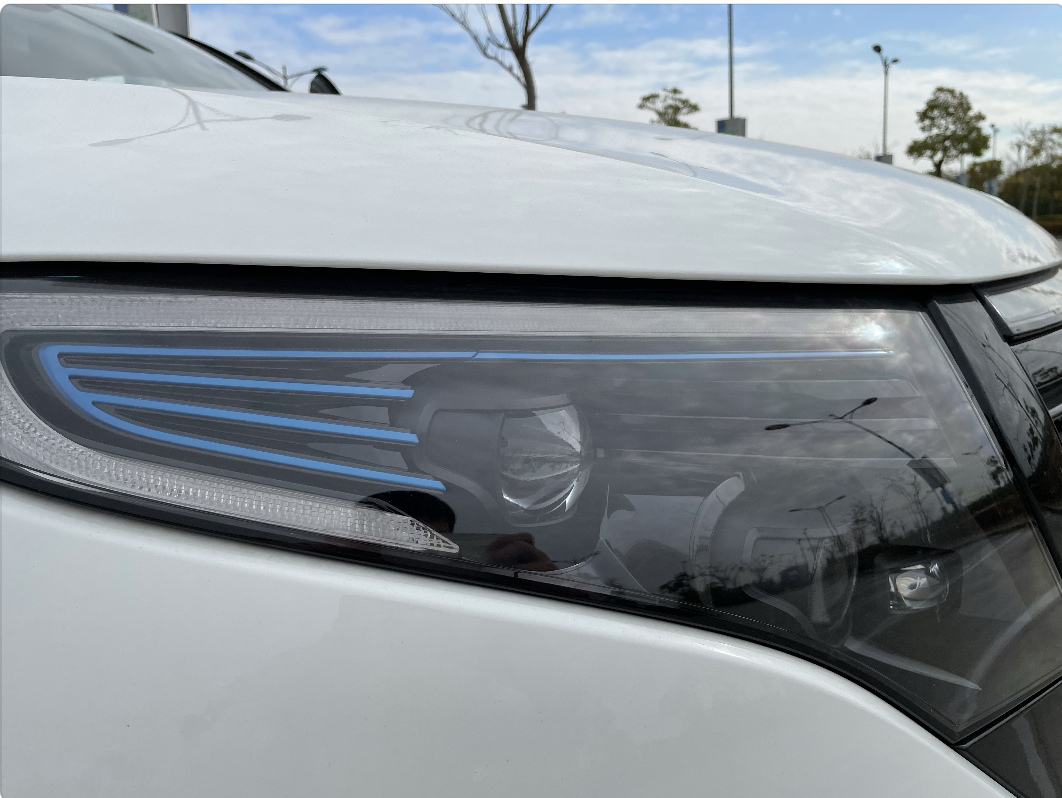
The daytime running lights have a through-style design that looks really cool when turned on. So, who can guarantee that Mercedes-Benz’s relatively aggressive design this time won’t become a classic design in the future?
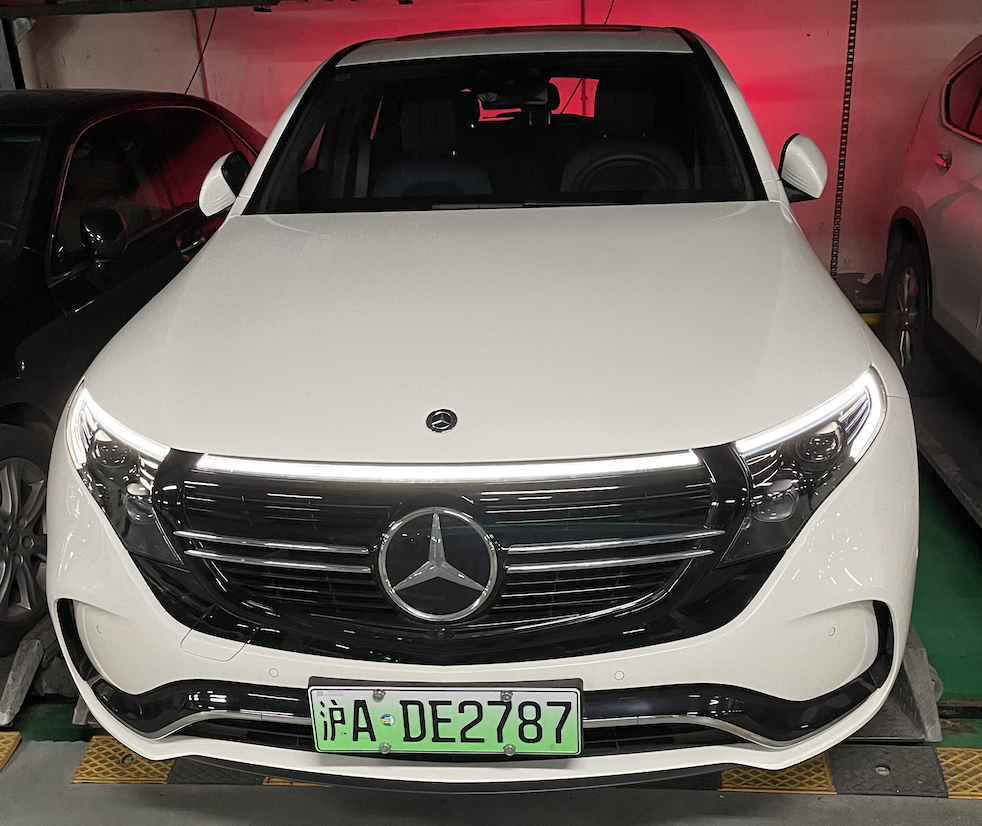
The overall trunk space is pretty good, with mesh pockets and hooks on both sides for storing some small items.
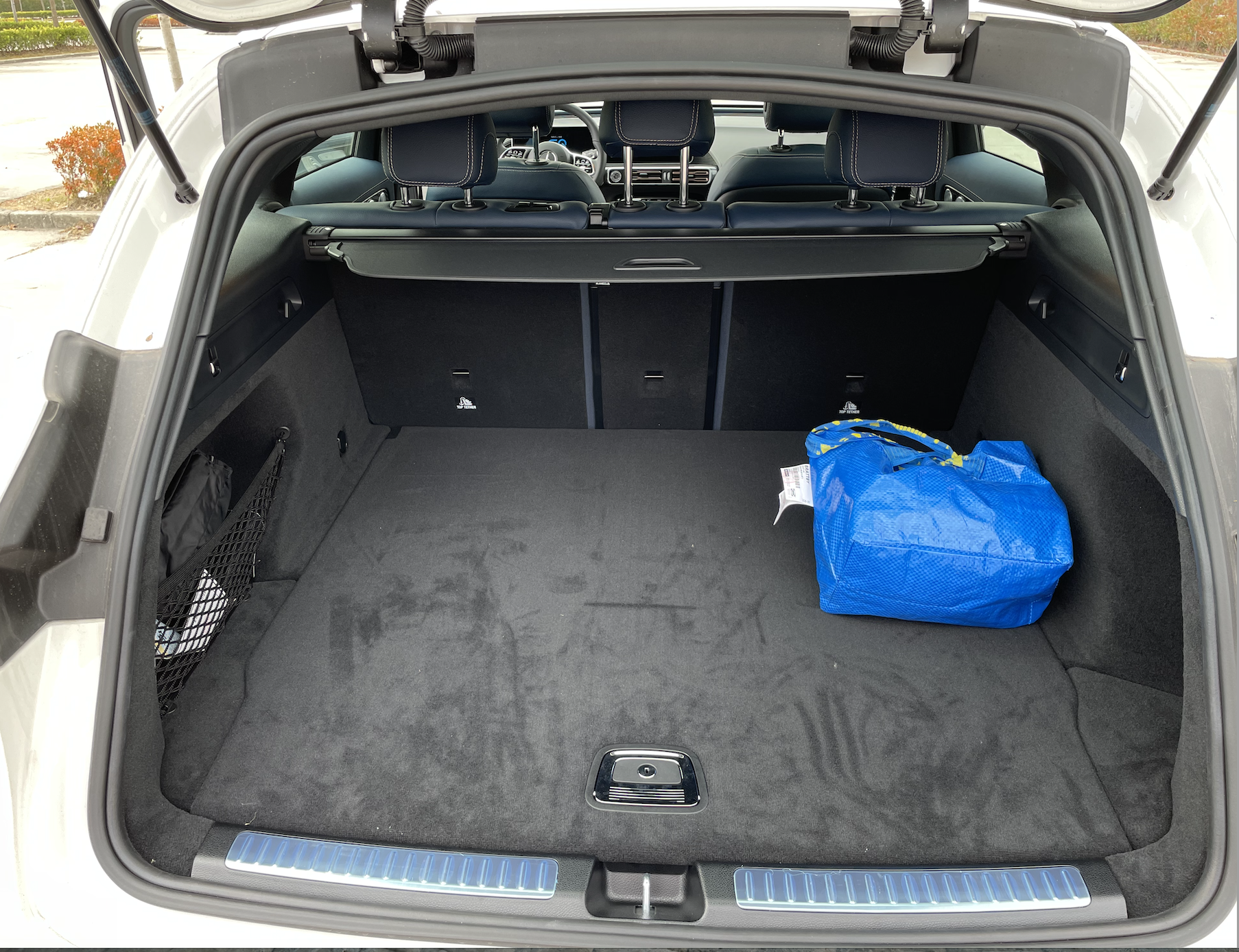
The configuration of the car I received this time is the top-of-the-line EQC400, which is equipped with the basic 400 configuration as well as additional features such as a head-up display (HUD) and a Berlin sound system. Mercedes-Benz EQC offers two models for consumers to choose from: 350 and 400.
Power
The EQC400 has higher engine power and accelerates 1.8s faster per 100 kilometers than the EQC350 (officially 6.9s). The EQC400 also boasts additional practical features, including convenient electric seat memory, 360 panoramic imaging, lane assist, and blind spot assist, although both models have the same battery capacity and range. Choosing between the EQC350 and EQC400 depends on individual needs.
The Berlin stereo system in the car sounds great.

Interior Space
Upon getting into the car, the author, who is 183cm tall, tried out the overall front and back seat space. The head still had about a fist-sized space left even when the seat was adjusted to the lowest position.
The back seat is average-sized with about two fist-sized space left after adjusting the front seat. There is enough room for girls to cross their legs at the back.
The blue leather sports seats throughout the car are comfortable, sturdy, and stylish. After continuously driving for about two hours, the author did not feel any discomfort in the waist or body. The automatic seats, including the headrest and thigh support, can be adjusted freely, so drivers with a more brawny build can adjust the thigh support to the most comfortable position.



The driver’s seat can store information for three drivers, which is very practical for automatic adjustment and switching function. The front passenger seat also has multiple adjustments.

The overall main driver’s screen of the EQC adopts the popular design of Mercedes’ main center console screen.

The piano paint mirror of the center console has fingerprint collection function. I wonder when Mercedes will change it to frosted material. Tesla’s latest 2021 model has already switched to frosted material.The center console is equipped with a USB-C port, as well as a wireless charging pad where a phone can be placed for charging. The bottom of the charging pad also has an area reserved for cables, making it very user-friendly.
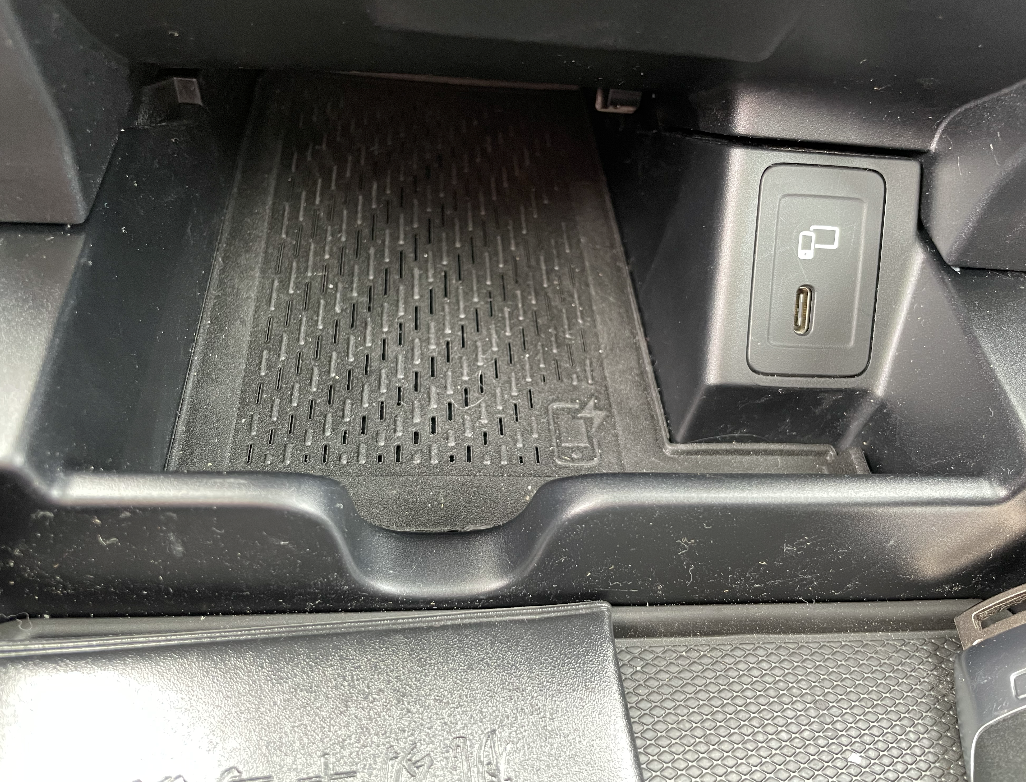
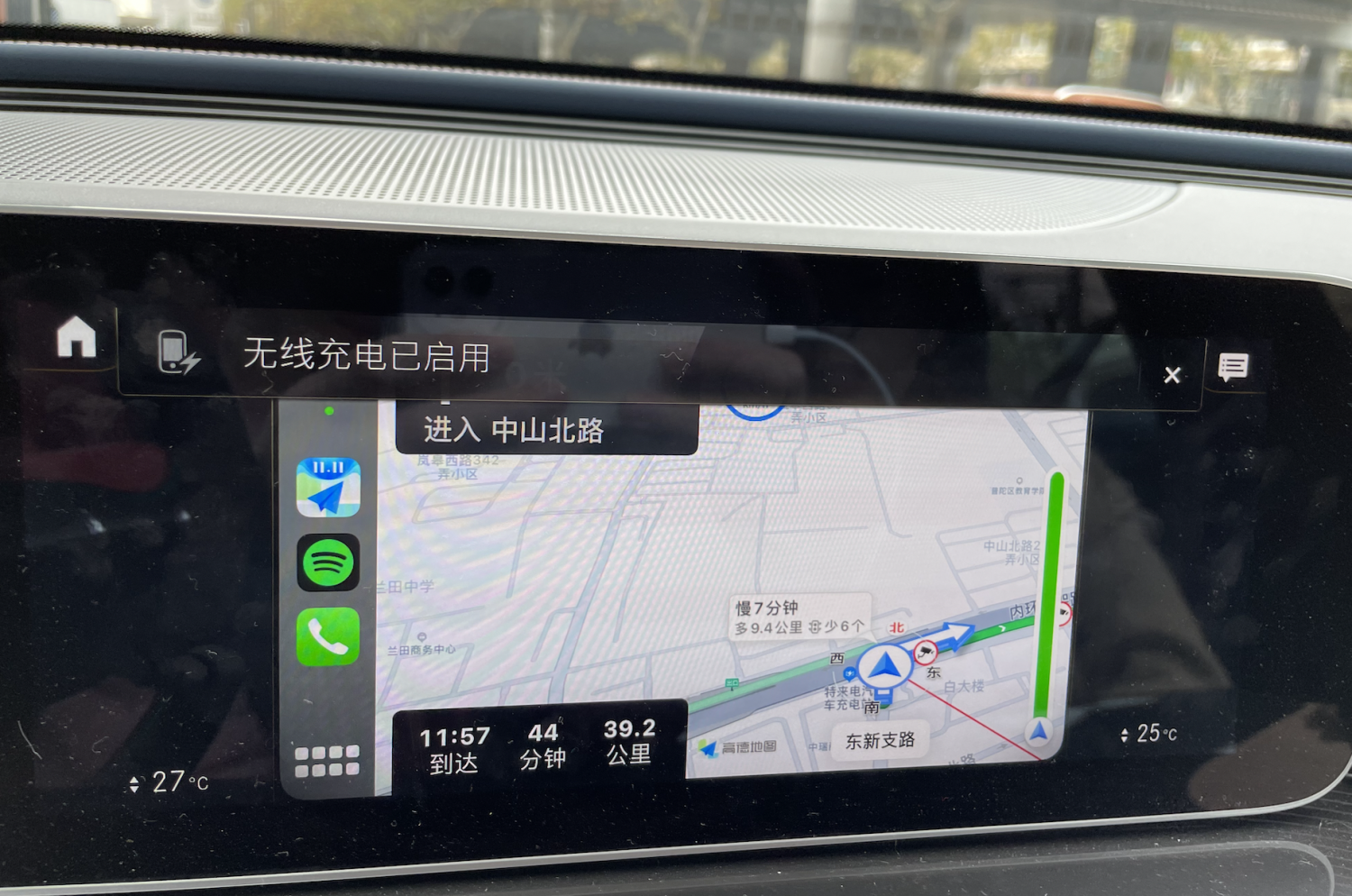
The armrest section adopts a double-door design, and also comes with 2 USB-C ports, which are likely intended for use by rear passengers.
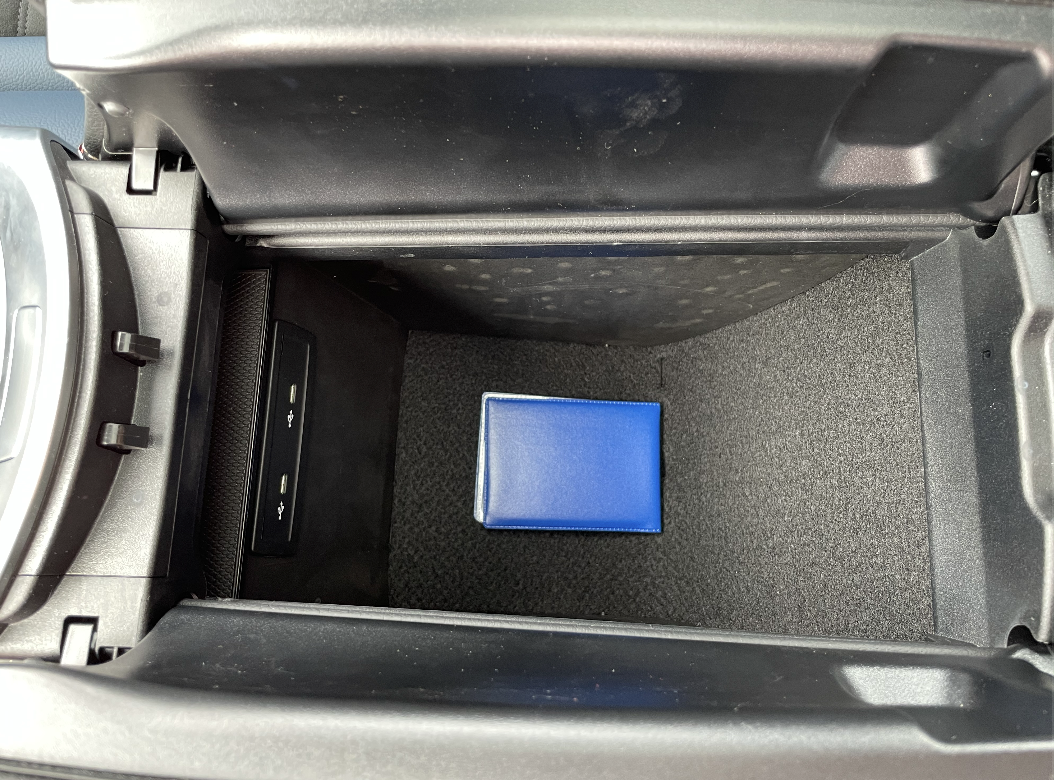
There is no cup holder in the center console, which I found a bit unfamiliar as I am used to having one in other brands of cars. However, a cup holder can be used in the left armrest position to hold a water bottle. After two days of use, I still prefer having access to mineral water on my right hand side, as it is still not very convenient to take water from the left-hand glove box position.
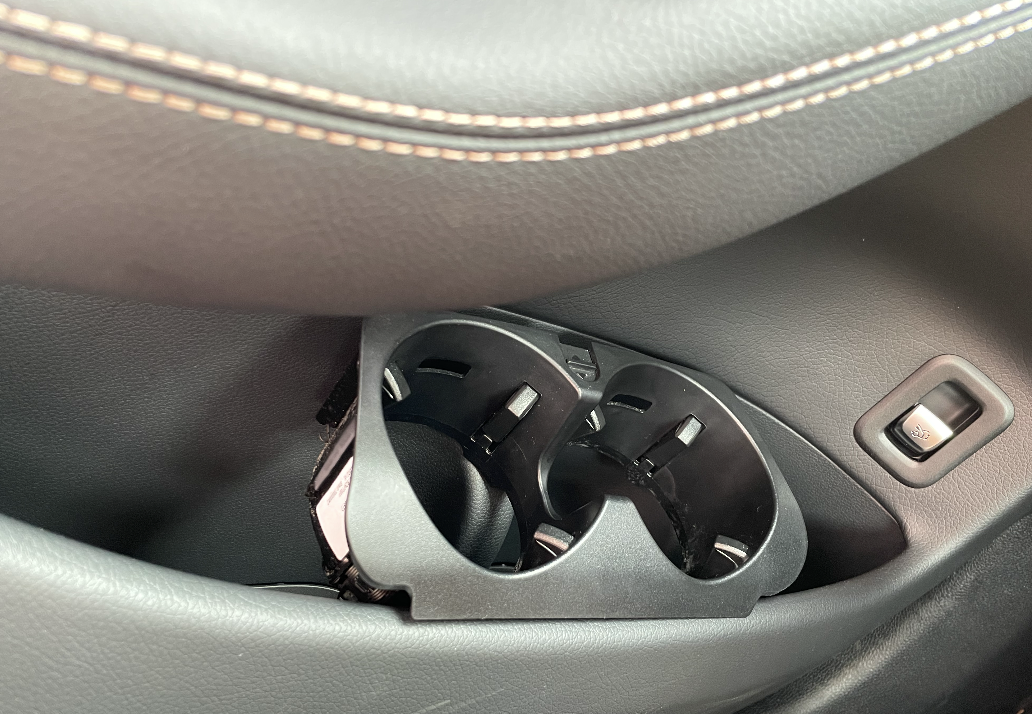
Overall, the interior of the Mercedes EQC inherits the usual luxury feel of the brand, and the ambient lighting at night can be set to different themes, providing drivers with a different mood at night.
The car is equipped with a small sunroof, but I have always felt that sunroofs are a relatively useless feature. For most of the time, I choose to keep it closed to block out the sun.
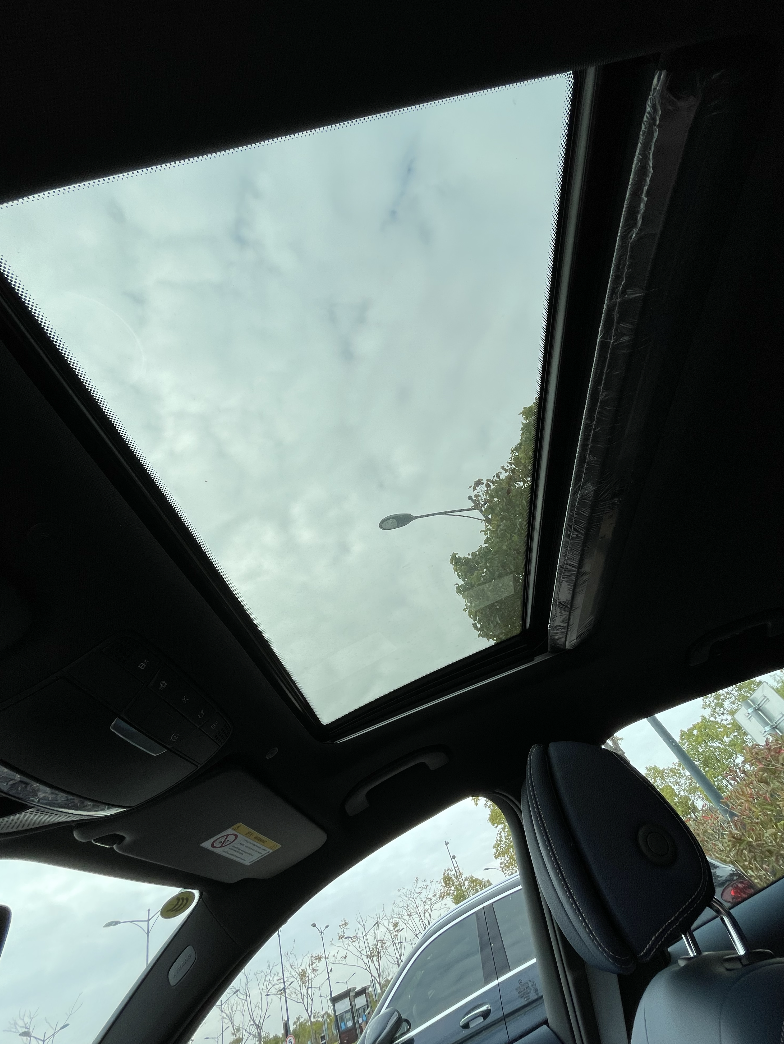
After discussing the exterior space and interior design, let’s focus on the driving experience and the necessary intelligent driving features of electric vehicles.
Intelligent Driving
As a pure electric design, Mercedes claims a 0-100km/h acceleration of 5.1 seconds, and some netizens even reported speeds starting with a “4”. From my actual experience on Shanghai streets, the starting acceleration is very comfortable, and the performance on highways is also excellent. There is no sluggishness even when accelerating above 100km/h, and a quick push of the accelerator can quickly increase the speed to over 120km/h. It has excellent performance for high-speed overtaking and does not lag behind gasoline-powered cars. It’s hard to imagine that this is an SUV.
At the same time, the cornering experience is also very good, as the steering wheel responds quickly. The damping experience when crossing speed bumps is also excellent, and it is comfortable to go over them without feeling any bumps. Additionally, the noise in the car is well controlled, providing a relatively quiet feeling whether driving on a highway or city roads.
EnduranceThis Mercedes EQC has an official range of 415 kilometers. Due to time constraints, I only fast-charged it for a few hours after receiving the car, without fully charging it. The system displayed an estimated remaining range of about 160 kilometers when the battery was half charged, which means the estimated driving range in winter would be around 320 kilometers at full charge. From the actual driving performance, the calculation of the remaining range is relatively accurate. Even driving gently, the actual consumption is even less than the estimated range. This truly amazed me.
The following picture represents a trip from home to Shanghai Disneyland, driving in standard mode for the whole 40 kilometers. Before departure, the estimated remaining range was 268 kilometers, and the current mileage was 1,602 kilometers.
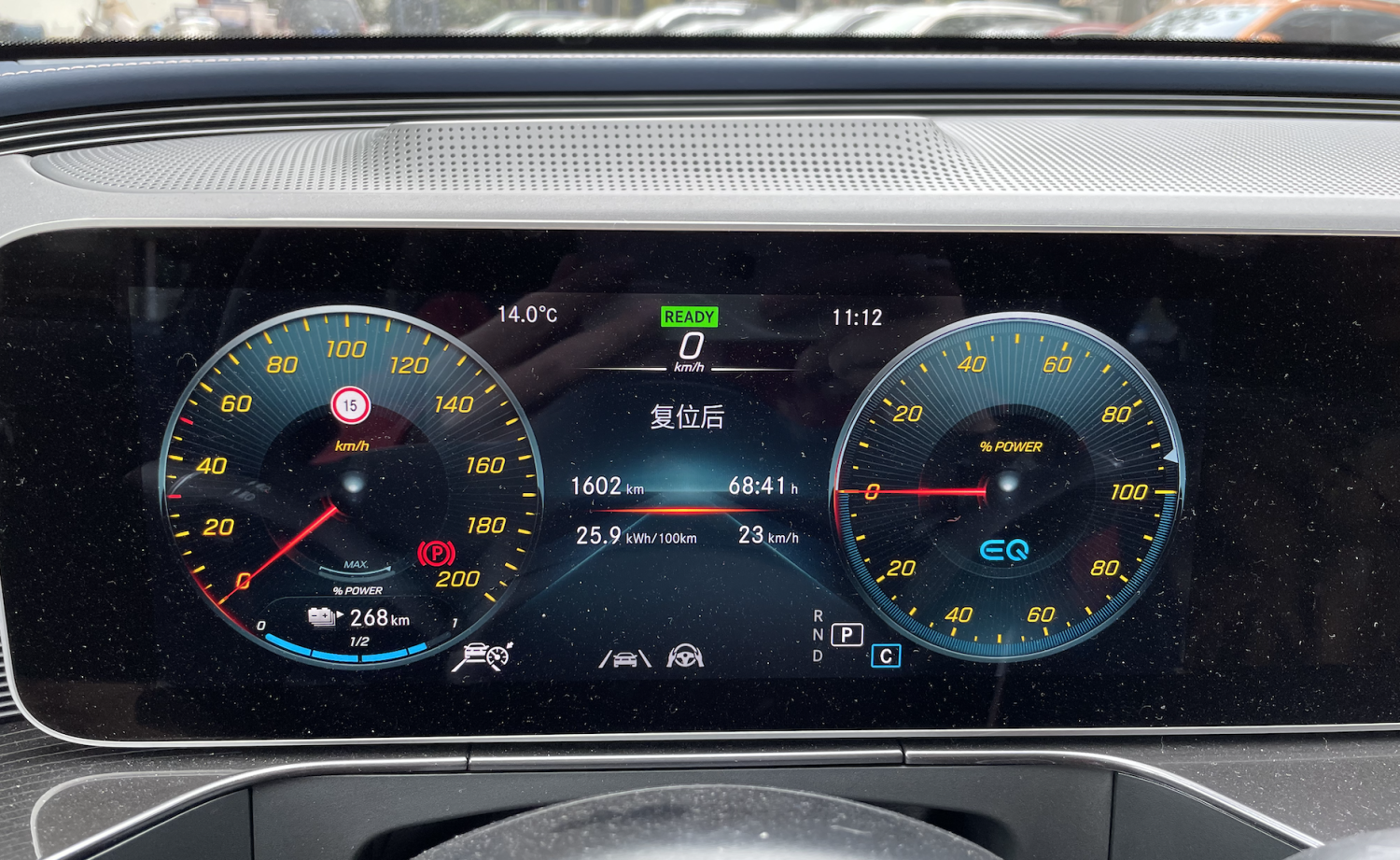
The following pictures were taken on the way to Costco after leaving Disneyland, with a remaining range of 245 kilometers, which means that the estimated consumption for the 40-kilometer journey from my home to Disneyland was only 23 kilometers.
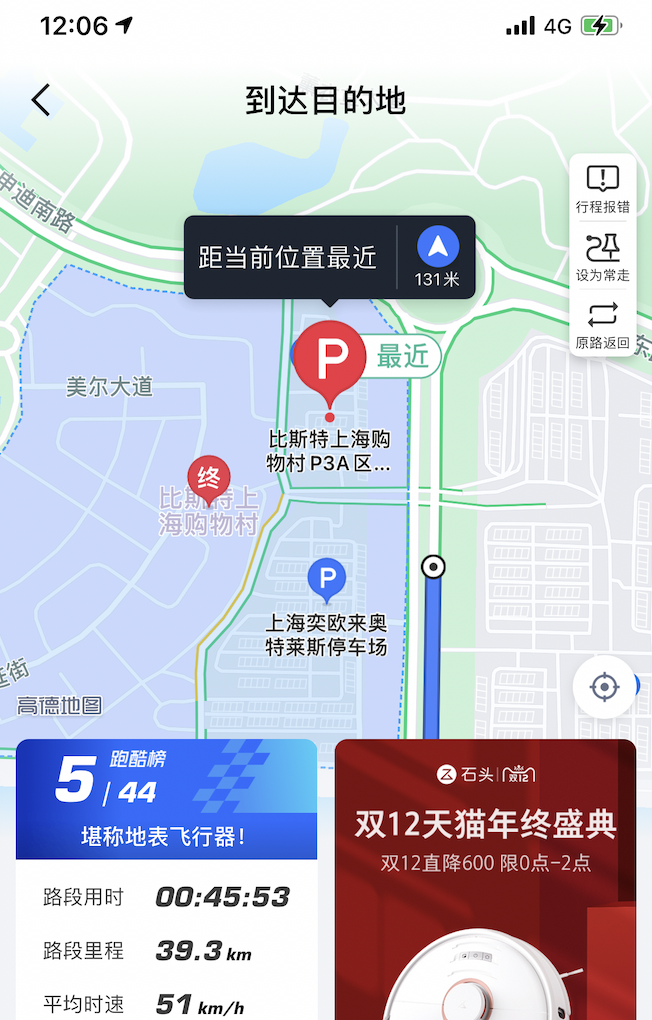
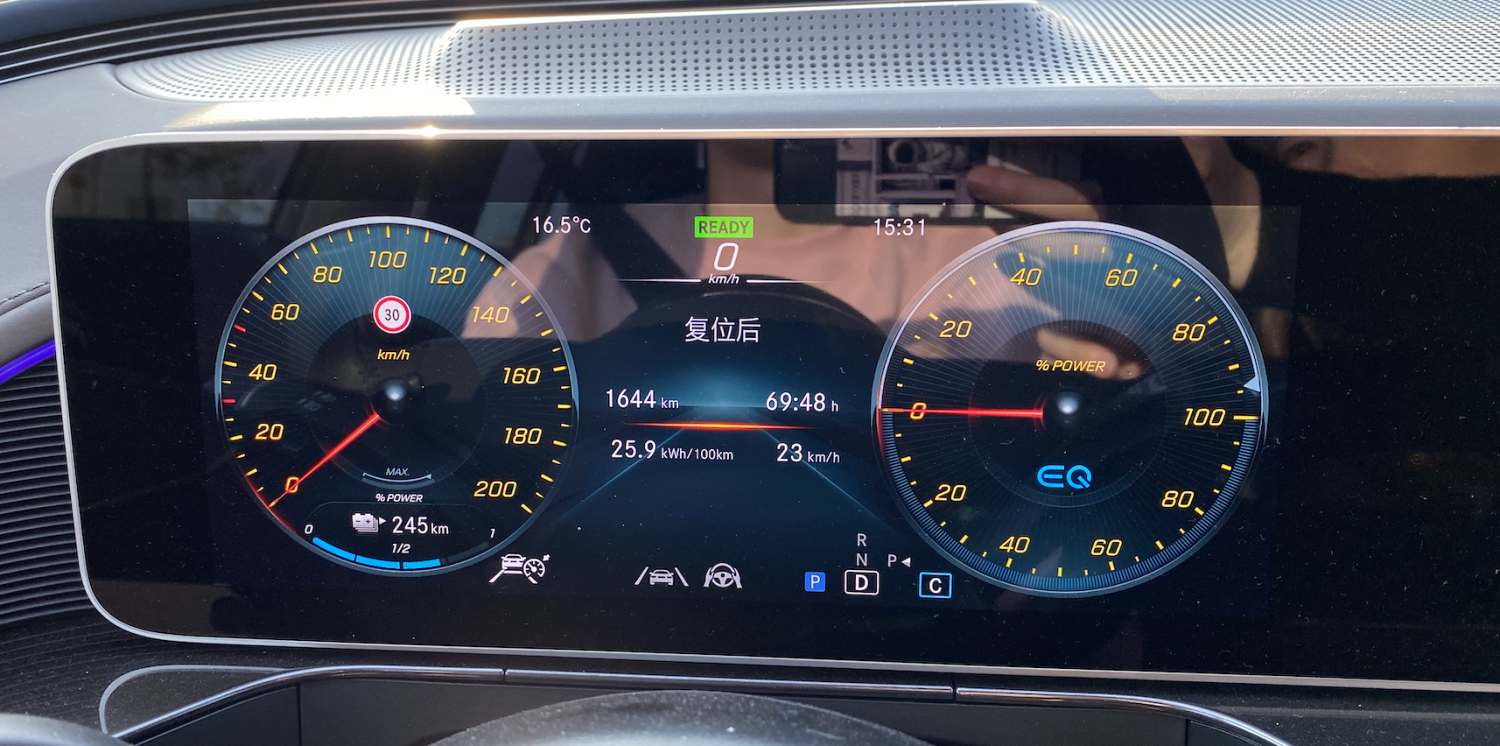
The entire trip to Costco was 60.1 kilometers, with an additional 10 kilometers driven due to taking a wrong turn. It can be seen that after driving 60 kilometers, the remaining range was only reduced by 40 kilometers.
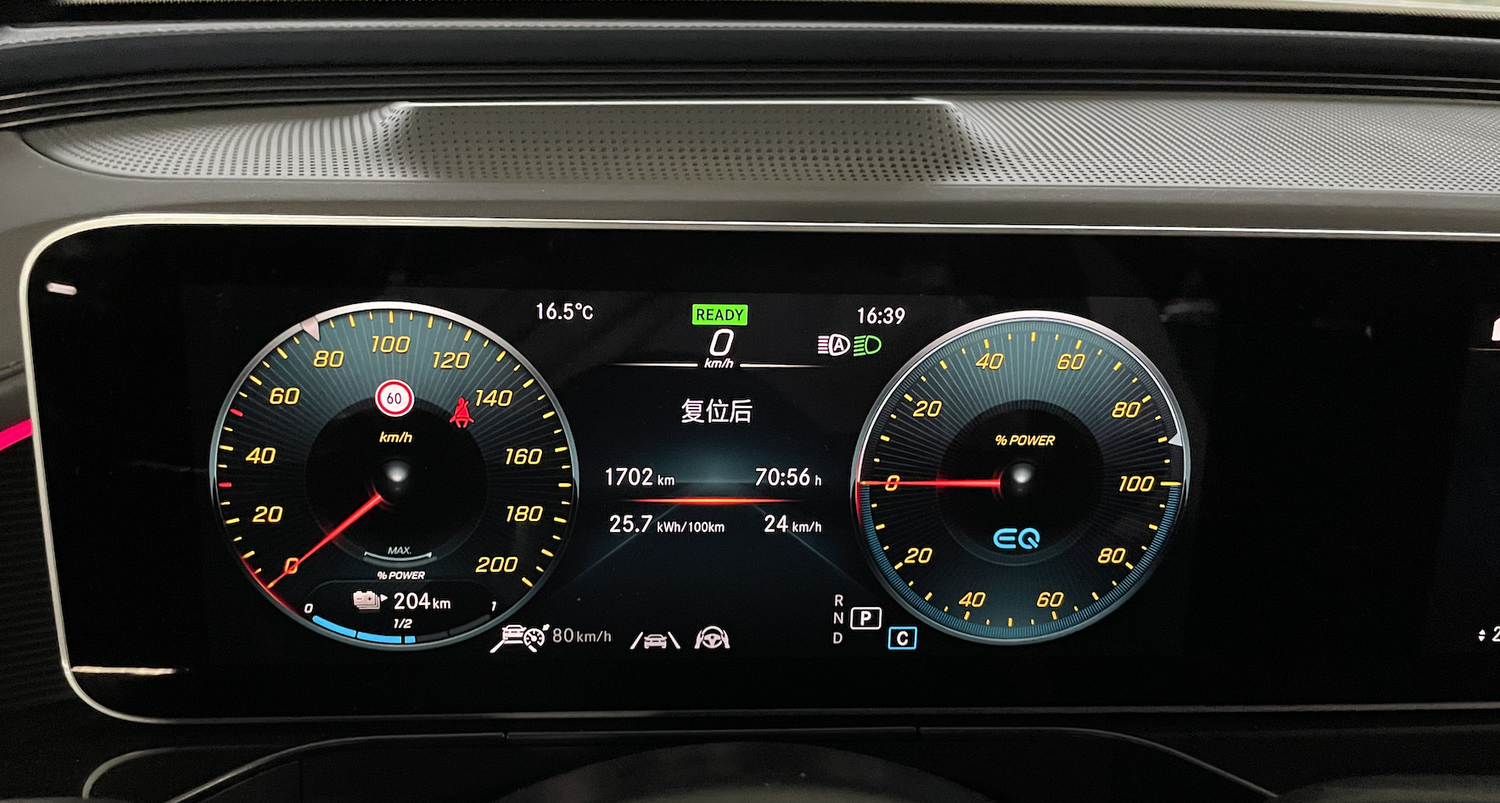

It’s not difficult to believe that in the future, car manufacturers can not only constantly break through battery technology and provide higher-capacity batteries, but they can also improve the driving range of electric cars by developing autonomous driving technology to achieve excellent energy recovery efficiency during the driving process. Perhaps this could also become a major technological barrier for competition among major manufacturers in the future.
During the two-day test drive, I experienced the L2-level autonomous driving technology offered by Mercedes-Benz. In addition to regular functions such as cruise control and lane keeping, L2-level autonomous driving also includes functions such as turn signal lane changing, full-speed adaptive cruise control, and distance control.Trying a few times to change lanes with the turn signal, I found that the system seems to have speed limit. It is not possible to change lanes automatically at low speed when turning on the turn signal. When changing lanes, the car will identify if there is a car at a certain distance in front and back. When trying to operate by turning on the left turn signal while there is a car following at a relatively close distance in the left rear lane, the system senses that the following car is too close and will not execute the lane change operation. Relatively speaking, the safety distance control is still relatively far (the figure below is taken on a closed road).
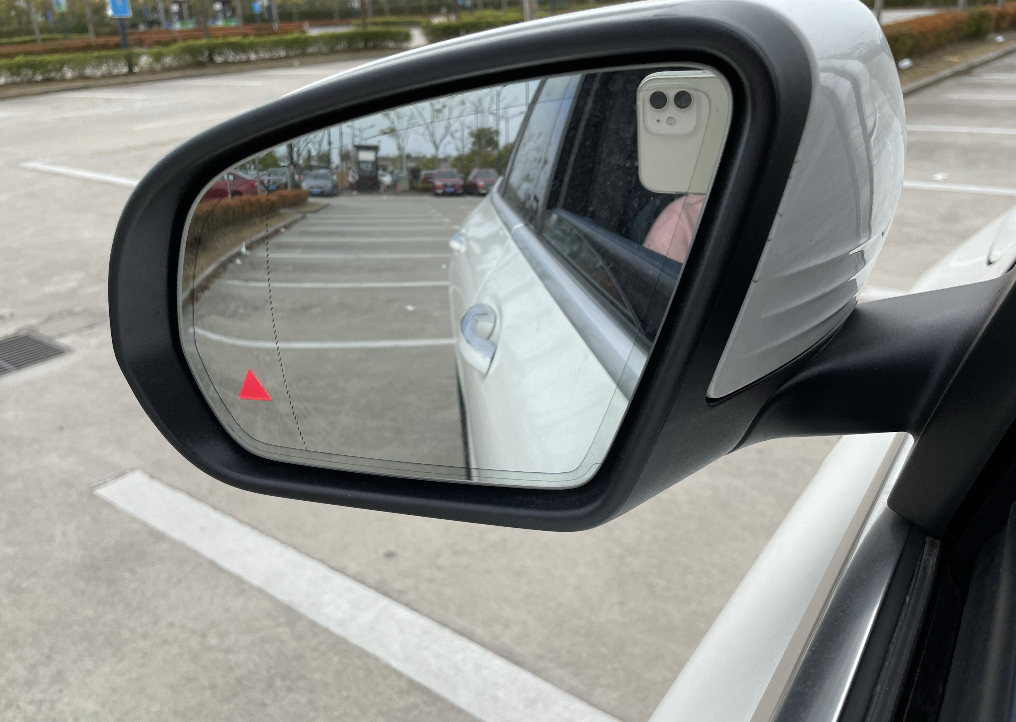
However, in crowded elevated highways in the city, this turn signal feature currently seems to be not very useful. It is better to control the steering wheel oneself. I also tried full-speed adaptive cruise control on the elevated highway. The EQC can set automatic follow-up distance for 1-4 cars to adapt to different road conditions.
When following the car automatically, if the car in front enters, the Mercedes-Benz will automatically brake to slow down. When the current car travels away from the set follow-up distance and the current speed is lower than the set follow-up speed, EQC will accelerate until it enters the set speed or follow-up distance. I personally think this is quite intelligent.
After trying a few times, I discovered an area where the experience is currently not ideal: When using the adaptive cruise control, the system will detect whether the driver’s hands are on the steering wheel for a certain period of time. If not detected, the adaptive cruise control will be automatically turned off, and the car will start to decelerate and the driver needs to step on the accelerator to intervene.
After a two-day test drive, I still haven’t figured out the logic of Mercedes’ steering wheel detection. There are often situations where my hands are on the steering wheel but not detected. I hope this small problem can be optimized in future upgrades.
Mercedes did not detect my hands on the steering wheel, but in fact, my hands were firmly grasping the wheel (taken on a closed road, do not imitate).
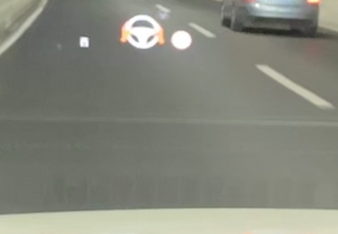
As automatic driving has become a major trend in the future, major manufacturers are beginning to enhance their own automatic driving technologies and bring consumers continuous iterative automatic driving experiences through OTA updates.
In the future, in addition to looking at brand, configuration, and price when purchasing a car, the reliability of automatic driving technology, the rigor of driving logic, and safety will become important factors for car buyers.
Summary
Overall, this EQC inherits all the advantages of Mercedes-Benz, luxury interior, excellent driving experience, avant-garde and bold appearance, and good performance. As Mercedes-Benz’s first-generation pure electric SUV, I think Mercedes-Benz has done a pretty good job. In the future, Mercedes-Benz will also launch more models in the EQ product line, targeting different consumer groups. If you are particularly fond of the brand tone of Mercedes-Benz and are unable to get a license or already have a gasoline car at home, I think Mercedes-Benz EQC is still a car worth considering.
This article is a translation by ChatGPT of a Chinese report from 42HOW. If you have any questions about it, please email bd@42how.com.
